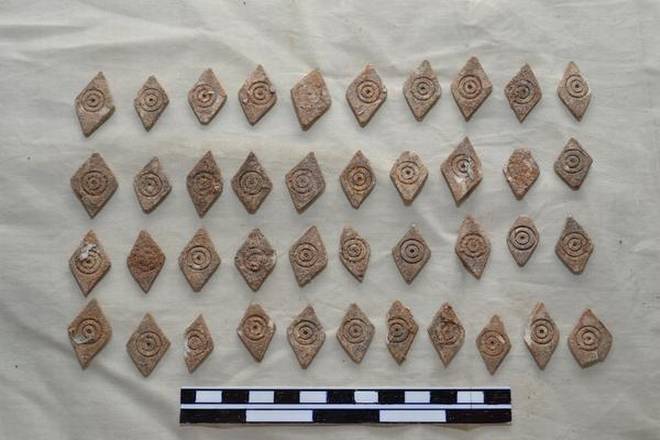Nearly 4,000-year-old bone ornaments, a capstone and other rare objects belonging to the megalithic age have been found at different sites near Hyderabad.
Tag: ASI
1,400-year-old Buddha idol found in Odisha village
While 80 per cent of the five-foot statue was buried in the soil, the face of Lord Buddha with seven-head snake was found outside the ground.
Historians to explore origin of Ram Setu, determine whether it is a natural or man-made structure
Is Ram Setu a natural phenomenon or a man-made structure? The Indian Council of Historical Research (ICHR) under the HRD ministry will conduct an underwater exploration study to find out.
Tsunami might have destroyed Harappan port town of Dholavira
Port town of Dholavira in Gujarat, the fifth largest Harappan site, might have been destroyed by a massive tsunami, a study by CSIR-National Institute of Oceanography (NIO) has revealed. Dholavira, the second largest Harappan site located within the present borders of India, comprises three parts including a castle, the middle town and the lower town.Dholavira… Continue reading Tsunami might have destroyed Harappan port town of Dholavira
Over 10,500 years old camping site discovered in Ladakh
The site was unearthed at 14,000 feet above sea level — on the way to Sasar La which leads to the Karakoram Pass. It suggests that humans camped in the area 10,500 years ago. As investigations revealed repeated human activity at this camping site for about eight hundred years, archeological survey of india will be… Continue reading Over 10,500 years old camping site discovered in Ladakh
Indus era at least 8,000 years old; ended because of weaker monsoon
Due to a recent revelation made by scientists from IIT-Kharagpur and Archaeological Survey of India, time has arrived to rewrite history textbooks.
Chinese, Indian archaeologists Mull Exploring Birthplace of Buddhism
Indian and Chinese archaeologists are discussing a cultural cooperation project in order to trace the spread of Buddhism from India to China. The Institute of Archaeology under the Chinese Academy of Social Sciences will collaborate with Indian archaeologists at key sites in Sarnath, in northeast India. The project is expected to include excavations, cultural relics… Continue reading Chinese, Indian archaeologists Mull Exploring Birthplace of Buddhism
Cannabis preserved India’s ancient Ellora caves from decay for 1,500 years
For years, the famous Ellora caves in the city of Aurangabad of Maharashtra have evoked curiosity as to just how in the world they have been immune to decay. For 1,500 years! Scientists seem to have an answer, and it’s the most unlikely one. They say it’s cannabis. Or Ganja. Indian archaeologists have discovered that… Continue reading Cannabis preserved India’s ancient Ellora caves from decay for 1,500 years
Archaeologists Stumble across ruins of a Forgotten Civilization in Mizoram
In an incredible discovery, archaeologists from India have come across ruins of a ‘Great Forgotten Civilization’ in Mizoram.
Remnants of 4000 years old Harappan period house found
The Archaeological Survey of India during its excavations carried out at Chandyan village in Baghpat district of Uttar Pradesh, has found remnants of a house that correspond to the late Harappa period. This is the first time when remnants of old civilization pertaining Harrappan period are found in the Upper Doab region which lies between Ganga… Continue reading Remnants of 4000 years old Harappan period house found

